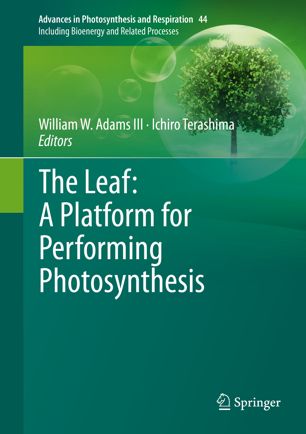

Most ebook files are in PDF format, so you can easily read them using various software such as Foxit Reader or directly on the Google Chrome browser.
Some ebook files are released by publishers in other formats such as .awz, .mobi, .epub, .fb2, etc. You may need to install specific software to read these formats on mobile/PC, such as Calibre.
Please read the tutorial at this link: https://ebookbell.com/faq
We offer FREE conversion to the popular formats you request; however, this may take some time. Therefore, right after payment, please email us, and we will try to provide the service as quickly as possible.
For some exceptional file formats or broken links (if any), please refrain from opening any disputes. Instead, email us first, and we will try to assist within a maximum of 6 hours.
EbookBell Team

5.0
80 reviewsThe leaf is an organ optimized for capturing sunlight and safely using that energy through the process of photosynthesis to drive the productivity of the plant and, through the position of plants as primary producers, that of Earth’s biosphere. It is an exquisite organ composed of multiple tissues, each with unique functions, working synergistically to: (1) deliver water, nutrients, signals, and sometimes energy-rich carbon compounds throughout the leaf (xylem); (2) deliver energy-rich carbon molecules and signals within the leaf during its development and then from the leaf to the plant once the leaf has matured (phloem); (3) regulate exchange of gasses between the leaf and the atmosphere (epidermis and stomata); (4) modulate the radiation that penetrates into the leaf tissues (trichomes, the cuticle, and its underlying epidermis); (5) harvest the energy of visible sunlight to transform water and carbon dioxide into energy-rich sugars or sugar alcohols for export to the rest of the plant (palisade and spongy mesophyll); and (6) store sugars and/or starch during the day to feed the plant during the night and/or acids during the night to support light-driven photosynthesis during the day (palisade and spongy mesophyll). Various regulatory controls that have been shaped through the evolutionary history of each plant species result in an incredible diversity of leaf form across the plant kingdom. Genetic programming is also flexible in allowing acclimatory phenotypic adjustments that optimize leaf functioning in response to a particular set of environmental conditions and biotic influences experienced by the plant. Moreover, leaves and the primary processes carried out by the leaf respond to changes in their environment, and the status of the plant, through multiple regulatory networks over time scales ranging from seconds to seasons. This book brings together the findings from laboratories at the forefront of research into various aspects of leaf function, with particular emphasis on the relationship to photosynthesis.